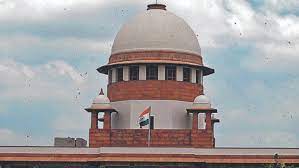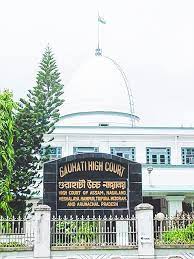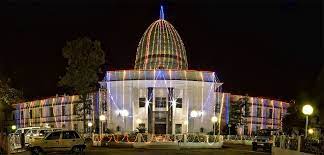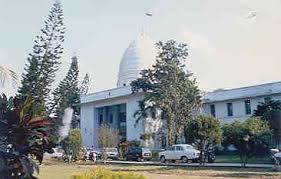How can the litigants secure justice for them when those entrusted to render justice are themselves insecure? These are questions which disturb us to no end, considering certain recent happenings involving firing of gun shots within the precincts of courts in India. (Para 1)
It is appalling that court premises in the national capital itself, in the past year or so, have witnessed at least three major incidents of gunfire. Preserving the sanctity of a court as a space where justice is administered and the rule of law upheld being non-negotiable, it is critical that judicial institutions take comprehensive steps to safeguard the well-being of all stakeholders. Such incidents, that too in court premises, are deeply concerning and pose significant risks to the safety of not only judges but lawyers, court staff, litigants and the general public. (Para 2)
Since safety and security of stakeholders in the judicial process is nonnegotiable, we deem it appropriate considering the aforesaid suggestions and having regard to the concerns and their larger ramifications which have been highlighted above, to lay down the following guidelines in the interest of justice in furtherance of the previous orders of this Court referred to above:
Security Measures
- There ought to be a security plan in place, in line with the recommendations herein, to be prepared by the High Courts in consultation with the Principal Secretaries, Home Departments of each State Government and the Director Generals of Police of the States/Union Territories or the Commissioners of Police wherever a court complex is within the jurisdiction of a Police Commissionerate, as the case may be, which should be timely implemented at the state & district levels covering District Headquarters and other courts in outlying areas as well.
- The security plan may include proposal for setting up of permanent Court Security Unit(s) in each complex, indicating the strength and source of drawing of manpower including armed/unarmed personnel and supervisory officer(s) for each such unit, the minimum term and mode of deployment of such manpower, list of duties and additional financial benefits for such manpower, as may be offered to secure their willingness to serve in such Units, special modules for training and sensitizing such manpower in matters of Court security, and miscellaneous matters related to such Units;
- The schematics of CCTV camera installation will have to be laid down on a district-wise basis where the respective State Governments should provide the requisite funds for the execution of such a plan in a timely manner.
- In newly constructed court complexes, there appears to be a lack of consistency regarding the installation of CCTV cameras, whether it should be done before or after inauguration. We emphasize that the installation of CCTV cameras should be an integral part of the construction project of courts, and therefore should be prioritized.
- To address concerns regarding data and privacy, as rightly highlighted by Mr Luthra, the High Courts may take appropriate measures or draft necessary guidelines in this regard.
- Further, upon the finalisation of the security plan, the High Courts may entrust the responsibility of installation and maintenance of the CCTV cameras with the concerned District and Sessions Judges for a more realistic analysis of local requirements.
- Keeping in mind the lax security measures at entry-exit points within several court complexes, we deem it necessary to recommend that these points may be secured by constant monitoring with the help of adequate security equipment. In this regard, the courts may consider putting in place security measures such as deployment of adequate police personnel, security stickers for vehicles, frisking, metal detectors, baggage scanners, court-specific entry passes, and biometric devices to enhance overall security. Other security measures may include regulating the use of court premises as thoroughfares, if necessary, even by way of total prohibition.
- There have been various concerns regarding the operation of various shops and vendors within court premises which may result in potential security lapses. In this regard, the relevant authorities may keep a strict check on the relevant permissions required for their continued operations.
- It may be ensured that emergency measures like ambulances, medical facilities and firefighting services are immediately available and modernised within court complexes and unimpeded access of such vehicles to the premises is assured at all times. This includes ensuring unhindered movement and keeping the court complex vicinity free from traffic and parking congestion. (Para 10)
We now turn to digitisation of judicial infrastructure. Digitisation of Judicial Infrastructure: a) This Court has, on multiple occasions, stressed the need for digitisation of judicial infrastructure, particularly at district levels. We have been apprised that at present, there are many courts which lack facilities to live stream court proceedings as well as facilities to record trials. We desire that these issues are looked into, in the right earnest by the High Courts. b) With a futuristic vision, we need to progress with implementing fresh and innovative ideas so that the possibility of any untoward incident in any court premises is avoided. Initiatives like Audiovisual (AV) technology/Videoconferencing (VC) facility for recording of evidence and testimonies in trial, live-streaming of court proceedings at all levels, establishing e-SEWA Kendras, particularly in remote areas may also be considered accordingly. (Para 11)
SUPREME COURT OF INDIA
2023 STPL(Web) 163 SC
[2023 INSC 706]
Pradyuman Bisht Vs. Union Of India & Ors.
Contempt Petition (C) No. 353 of 2020 in Writ Petition (Crl.) No. 99 of 2015 Special Leave Petition (C) No. 2952 of 2020 Suo Moto Writ (Crl.) No. 2 of 2021 Writ Petition (C) No. 867 of 2021 Writ Petition (C) No. 1422 of 2019-Decided on 11-8-2023
https://stpllaw.in/wp-content/uploads/2023/08/2023-STPLWeb-163-SC.pdf







